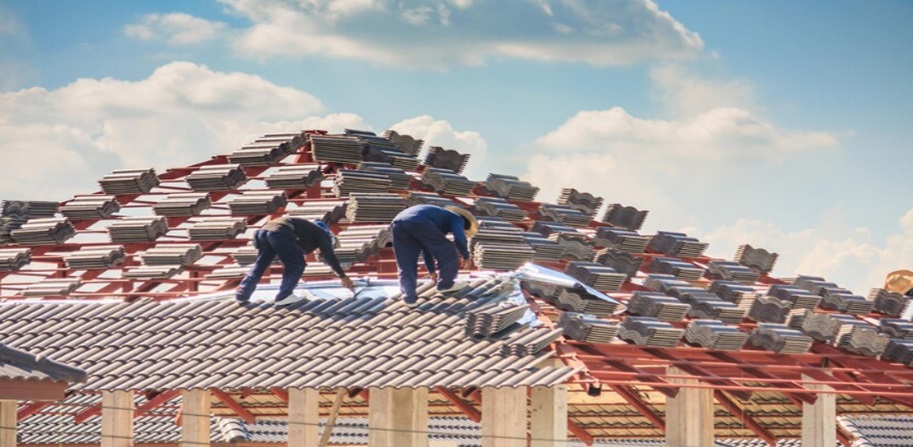Sometimes replacing your roof is the better choice compared to repairing it. While repairs can address specific issues like minor leaks or damaged shingles, they may not fully resolve underlying problems that could lead to future issues.
Replacing your roof offers several advantages. It provides an opportunity to upgrade to newer, more durable materials that offer better protection and energy efficiency. A new roof also ensures uniformity in quality and appearance, enhancing your home’s curb appeal and overall value.
Consulting with a roofing contractor professional can help you weigh these factors and make the best choice to ensure your home remains safe, secure, and protected from the elements.
Age of Your Roof
One of the most significant indicators that it might be time to replace your roof is its age. Most roofing materials have a lifespan, and as they age, they become more susceptible to damage and deterioration.
Asphalt shingles typically last between 20 to 25 years, while materials like metal or slate can last much longer. If your roof is nearing or past its expected lifespan, it’s wise to consult with a roofing contractor to assess its condition.
Curling or Buckling Shingles
Inspect the shingles on your roof regularly. Curling, buckling, or cracked shingles are signs of weathering and indicate that your roof may no longer be effectively protecting your home. Shingles that are missing granules or have bald spots are also indicators of aging and wear.
A roofer can evaluate whether these issues are localized or widespread and advise on whether repair or replacement is necessary.
Leaks and Water Damage
If you notice water stains on your ceiling or walls, it’s a clear sign of roof leaks. Leaks can result from damaged flashing, cracked shingles, or deteriorating underlayment. Promptly addressing leaks is crucial to prevent further damage to your home’s interior structure, such as mold growth, rotting wood, or compromised insulation.
A roofing contractor can conduct a thorough inspection to determine the source of the leak and recommend appropriate repairs or replacement.
Sagging Roof Deck
A sagging roof deck is a serious issue that requires immediate attention. It indicates structural damage or weakening of the roof’s foundation, possibly due to prolonged exposure to moisture or inadequate ventilation.
A sagging roof can compromise the integrity of your entire home and pose safety risks. Contact a roofer immediately if you notice any visible signs of sagging or unevenness on your roof.
Increased Energy Bills
An inefficient roof can contribute to higher energy bills. Poor insulation or ventilation can cause your heating and cooling systems to work harder to maintain a comfortable temperature inside your home.
If you’ve noticed a significant increase in your energy bills, it could be a sign that your roof is no longer providing adequate insulation. Roofing contractors or roofers can assess your roof’s energy efficiency and recommend improvements to help you save on energy costs.
Conclusion
Replacing your roof is a significant investment in the long-term safety, comfort, and value of your home. Don’t wait until small problems become major headaches; proactive roof maintenance ensures your home remains a secure and comfortable haven for years to come.

